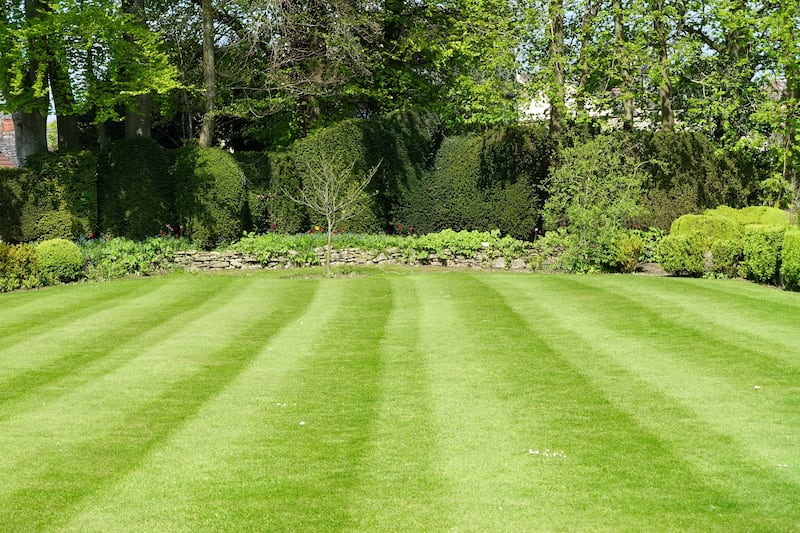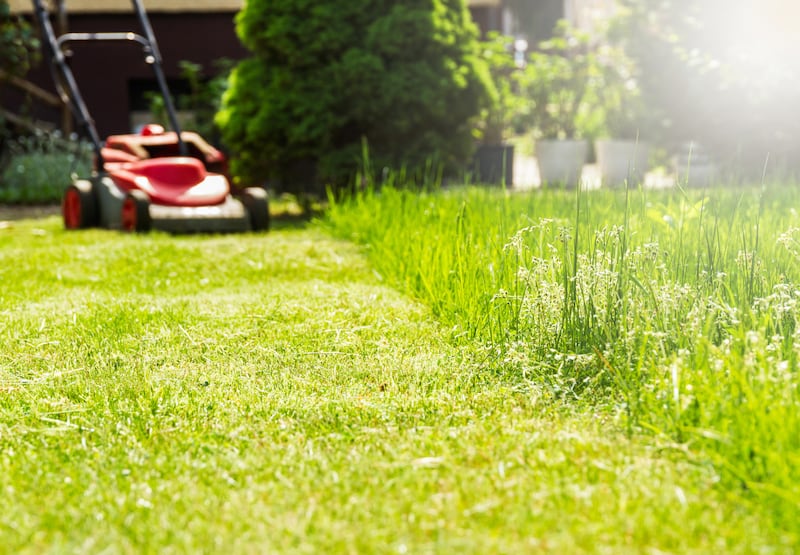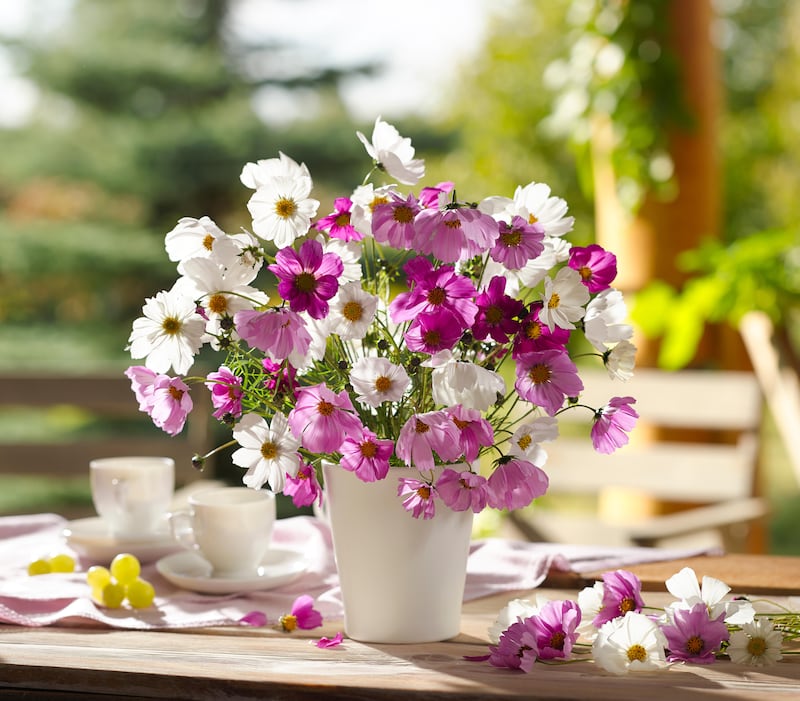So how is your lawn doing? Or is it impolite of me to ask?
The reason I’m wondering is that once upon a time, back when the accepted gold standard of good gardening was a weed-free, moss-free, grassy sward as smooth and brilliantly green as a billiard-table, it would have been the most innocuous of questions. But not any more.
Wise to the fact that achieving such glossy horticultural perfection comes with an awful lot of fuss and palaver – and the regular use of mowers, strimmers, selective weedkillers, moss-killers and fertiliser plus intermittent irrigation during summer droughts – having the “perfect” lawn just doesn’t cut it for a growing band of gardeners. Instead, the subject of lawn care has become a loaded one (like it or not, lawns say a lot about their owners) where strongly held opinions vary wildly.
It’s not just the time, effort and environmental cost of maintaining an exquisitely manicured, non-biodiverse sward that many are rebelling against. In the US, for example, where the perfectly primped, generously irrigated suburban lawn has long been the stuff of the American dream, the subject of lawn care is becoming a sort of cultural torch paper, a literal and figurative turf war that pits traditionalists against liberals, old against young, townies against rural dwellers.
READ MORE
Depending on those polarised points of view, that verdant, weed-free, neatly-shaven patch of grass is now either: (a) an enduring and admirable expression of high standards of horticulture and/or a deep love and pride in your garden; or (b) it’s a boring horticultural dinosaur and a symbol of humankind’s lofty disregard for mother nature.
Here in Ireland, where our generally mild, damp climate provides exactly the sorts of growing conditions that grass loves, lawn shaming isn’t (yet) as contentious an issue. But the debate between those who like a traditional, tightly mown, weed-free lawn and those who prefer theirs on the wild side is heating up, especially when it comes to shared public spaces such as parks, school and hospital grounds.

Occupying the middle ground are the many gardeners (myself among them) who, for plenty of good, practical reasons, want some kind of traditional lawn for at least some of the year, but just not one that comes at a high environmental cost. So we’re not, for example, dosing our lawns with synthetic fertiliser and weedkillers, or irrigating them. Nor do we get a whole lot of joy from spending hours keeping every blade of grass neatly shorn. For the same reasons, we’re not in any way offended by the sight of a mossy lawn, or one studded with daisies and dandelions or “fairy rings”, while we genuinely enjoy the sight of lots of shaggy, overgrown areas of grass where nature is given a free run.
For those who suffer badly from hay-fever or asthma, flowering lawns can be a nightmare in terms of symptoms
On the other hand, we still want our lawns to be spaces that we can use and enjoy. So rather than dutifully hauling out the lawnmower every weekend, we middle-grounders are adopting a much more laissez-faire, nature-friendly, minimal-mow approach to lawn upkeep that makes space for humans while simultaneously supporting biodiversity by nourishing wildflowers, soil life and visiting pollinators.
For many, this means no mowing at all this month in support of the annual global No Mow May campaign first launched by the UK nature conservation charity Plantlife in 2019. For others, it means following a thoughtful mowing regime where only certain sections of the lawn are cut on a rotating basis, and these are cut much less regularly. For example, mowing some sections once every four to six weeks, rather than once a week, and deliberately leaving other sections of the lawn entirely unmown throughout the summer months. Or alternating the mowing regime of certain sections to allow each to grow and flower between cuts – a great way of offering food and shelter for garden wildlife without ever having to let your lawn go completely wild. Even something as simple as raising your mower’s blades to maximum height to allow low-growing species of wildflowers – daisies, dandelions, clover, violets, eyebright, for instance – to grow and bloom is a wonderful way to quickly create a bee-friendly lawn that’s both pretty and practical.

All of this makes sense for multiple reasons. It’s good for nature and good for us – a gentler, kinder, easier, less time-intensive, more planet-friendly approach to lawn care that comes with so many benefits. However, those countless pluses aside, it’s only fair to say that these kinds of nature-friendly lawns can present their own challenges.
For those who suffer badly from hay-fever or asthma, for example, flowering lawns can be a nightmare in terms of provoking symptoms (I know of one garden-owner who has had to give up on their much-loved meadow-style lawn for this reason). In this case, one possible solution is to consider cultivating what’s known as a microclover lawn using seed of a compact variety of native white clover, Trifolium repens, a leguminous, hardy, drought-resistant native perennial that happily tolerates intermittent mowing but not intensive wear. Its small, pretty, bee-friendly flowers are a good low-allergen alternative to the allergy-inducing, pollen-rich flowers of grasses (85-90 per cent of people with hay-fever are highly allergic to grass pollen, which is easily wind-borne).
Another worry is that your wildlife-friendly lawn will quickly end up as a sad, trampled mess of crushed plants unless careful thought and pre-planning is given to ensuring easy access to other important garden elements (sheds, play areas, utility areas, washing lines, etc). The solution here is to think ahead, study your garden’s desire paths (those routes most regularly used by people and pets) and then mow these and any other heavily used areas regularly enough to keep them usable throughout the summer months.
Now that their flowering period has finished for another year, this is a great time to move and/or divide large, established clumps of narcissus
For those gardeners who decide that No Mow May is late enough for their lawn to go without a trim, or who want to cut it back hard in late summer to encourage its wildflowers to self-seed, there’s also the practical challenge of how to cut it back. Most domestic lawnmowers, for example, won’t cope with knee-high grass, while even strimmers will struggle.
By far the best solution here is to use an Austrian scythe, which will make short work of any tall, meadow-style lawn just so long as you keep it sharpened and peened. The other great benefit of this, by the way, is that instead of that noisiest of weekend gardening rituals – one marked by the persistent angry drone of the mower or strimmers – all that can be heard is the soft hiss-and-swish of a finely peened blade. Not only will your ears thank you for it, but so will the surrounding wildlife and your neighbours.
This week in the garden
If you’re growing a lot of flowering annuals, biennials, perennials and shrubs from seed or cuttings this spring-summer, then bear in mind that some species will really benefit from being pinched out. “Pinching out” is the gardening term used to describe the technique where the soft, growing tips of different kinds of young plants are nipped out (typically using your thumb and index finger) just above a pair of leaves to encourage the young plant to bush up. While this method isn’t suitable for all species, it’s an excellent way to encourage many kinds of annual bedding plants and tender perennials to produce plenty of flowering stems. Species suitable for pinching out in this way include dahlia, tagetes, cosmos, fuchsia, tagetes, petunia, amaranthus and snapdragons.

Now that their flowering period has finished for another year and their strappy foliage has begun to die back, this is a great time to move and/or divide large, established clumps of narcissus. Use a garden fork to lift the clumps and then gently peel the individual bulbs away, quickly replanting them in their new positions back to their original depth and finishing off with a generous watering to help them re-establish. Mark each new growing spot with a label to remind yourself what’s there.
Dates for your diary
Tomorrow, Sunday May 14th, Borris House, Borris, Co Carlow (please note the change of venue, as this event was originally scheduled to take place in Huntington Castle, Clonegal, Co Carlow), Ireland’s annual Rare & Special Plant Fair will take place with up to 40 stalls of rare and unusual plants by many of the country’s top specialist nurseries, see rareandspecialplantfair.ie
May 25th (8pm), Northridge House, St Luke’s, Castle Road, Mahon, Co Cork, T12 H970, A Garden Tapestry: An Exploration of Unusual Perennials and Hard to Find Varieties for the Spring and Summer Garden, a lecture by Clare Beumer of Gortkelly Nurseries, Shinrone, Co Offaly, on behalf of Cork Alpine Hardy Plant Society, admission €10.




















